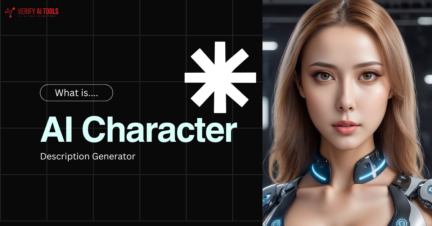In the ever-evolving world of technology, artificial intelligence (AI) has emerged as a game-changer across various industries. One of the most exciting applications of AI is in the creation of 3D models. Whether for video games, virtual reality, architecture, or medical imaging, the demand for high-quality 3D models is skyrocketing. AI is stepping up to meet this demand, offering tools and techniques that can generate perfect 3D models with unprecedented speed and accuracy. This article explores how AI is revolutionizing the creation of 3D models, the technologies behind it, and the potential it holds for the future.
What are 3D Models?
Before diving into the role of AI, it’s essential to understand what 3D models are. A 3D model is a digital representation of a three-dimensional object or surface. These models are created using specialized software and are used in various fields, including entertainment, engineering, healthcare, and more. The process of creating a 3D model traditionally involves a significant amount of manual work, requiring skilled artists and designers to meticulously craft each detail.
The Traditional Process of Creating 3D Models
Traditionally, creating a 3D model involves several steps:
- Conceptualization: The initial idea or concept is sketched out.
- Modeling: Using software like Blender, Maya, or 3ds Max, artists create the 3D model by shaping and sculpting digital meshes.
- Texturing: Applying textures and materials to the model to give it a realistic appearance.
- Rigging and Animation: Adding a skeleton to the model for animation purposes.
- Rendering: Generating the final image or animation from the 3D model.
This process is time-consuming and requires a high level of expertise. However, AI is changing the game by automating and enhancing various aspects of 3D model creation.
How AI is Transforming 3D Model Creation
AI is revolutionizing the creation of 3D models through several innovative approaches:
- Automated 3D Modeling
AI-powered tools can automate the process of creating 3D models, significantly reducing the time and effort required. These tools use machine learning algorithms to analyze 2D images or sketches and generate corresponding 3D models. For example, AI can take a 2D blueprint of a building and automatically create a detailed 3D architectural model.
- Enhanced Detail and Realism
AI can enhance the detail and realism of 3D models by analyzing vast datasets of real-world objects and textures. Machine learning algorithms can learn from these datasets to generate highly realistic textures, lighting, and shading. This capability is particularly valuable in industries like gaming and virtual reality, where realism is crucial for immersive experiences.
- Generative Design
Generative design is a process where AI algorithms generate multiple design options based on specific parameters and constraints. In the context of 3D modeling, AI can create numerous variations of a model, allowing designers to choose the best one. This approach is widely used in industries like automotive and aerospace, where optimizing design for performance and efficiency is critical.
- 3D Scanning and Reconstruction
AI-powered 3D scanning technologies can capture real-world objects and environments with high precision. These scanners use AI algorithms to process the captured data and reconstruct accurate 3D models. This technology is invaluable in fields like archaeology, where it can be used to create digital replicas of ancient artifacts, or in healthcare, for creating detailed 3D models of patient anatomy.
- AI-Assisted Texturing and Animation
AI can assist in the texturing and animation phases of 3D model creation. For instance, AI algorithms can automatically generate textures based on a few input parameters, reducing the need for manual texturing. In animation, AI can predict and generate realistic movements based on a set of initial keyframes, streamlining the animation process.
Technologies Behind AI-Driven 3D Modeling
Several cutting-edge technologies enable AI to create perfect 3D models:
- Machine Learning and Neural Networks
Machine learning algorithms, particularly neural networks, are at the core of AI-driven 3D modeling. These algorithms can learn from vast datasets of 3D models and images, enabling them to generate new models with high accuracy. Convolutional Neural Networks (CNNs) and Generative Adversarial Networks (GANs) are commonly used in this context.
- Computer Vision
Computer vision technologies allow AI to analyze and interpret visual data, such as 2D images and videos. By understanding the visual context, AI can generate corresponding 3D models. This capability is particularly useful in applications like 3D scanning and reconstruction.
- Natural Language Processing (NLP)
NLP enables AI to understand and interpret human language, allowing users to create 3D models through text descriptions or voice commands. For example, a designer could describe a model in natural language, and the AI would generate the corresponding 3D model.
- Cloud Computing
The computational power required for AI-driven 3D modeling is immense. Cloud computing provides the necessary infrastructure to run complex algorithms and process large datasets, making it feasible to create high-quality 3D models in real-time.
Applications of AI-Generated 3D Models
The applications of AI-generated 3D models are vast and span multiple industries:
- Entertainment and Gaming
In the entertainment and gaming industry, AI-generated 3D models are used to create realistic characters, environments, and special effects. AI can automate the creation of background elements, allowing artists to focus on more critical aspects of game design.
- Architecture and Construction
AI-generated 3D models are transforming architecture and construction by enabling rapid prototyping and visualization. Architects can use AI to create detailed 3D models of buildings, allowing clients to visualize the final product before construction begins.
- Healthcare
In healthcare, AI-generated 3D models are used for medical imaging, surgical planning, and patient education. For example, AI can create detailed 3D models of a patient’s anatomy from MRI or CT scans, aiding in diagnosis and treatment planning.
- Manufacturing and Product Design
AI-generated 3D models are widely used in manufacturing and product design for prototyping and testing. AI can optimize designs for performance, cost, and manufacturability, leading to better products and reduced time-to-market.
- Virtual and Augmented Reality
AI-generated 3D models are essential for creating immersive virtual and augmented reality experiences. AI can generate realistic environments and objects, enhancing the user experience in VR and AR applications.
Challenges and Future Directions
While AI is revolutionizing 3D model creation, several challenges remain:
- Data Quality and Availability
The quality of AI-generated 3D models depends on the quality and quantity of training data. Ensuring access to diverse and high-quality datasets is crucial for improving AI algorithms.
- Computational Resources
AI-driven 3D modeling requires significant computational resources. Advances in hardware and cloud computing are essential to make these technologies more accessible.
- Ethical Considerations
As with any AI technology, ethical considerations must be addressed. Issues like data privacy, intellectual property, and the potential for misuse need to be carefully managed.
- Integration with Existing Workflows
Integrating AI-driven tools into existing 3D modeling workflows can be challenging. Ensuring compatibility and ease of use is essential for widespread adoption.
Conclusion
AI is revolutionizing the creation of 3D models, offering tools and techniques that can generate perfect models with unprecedented speed and accuracy. From automated modeling and enhanced realism to generative design and 3D scanning, AI is transforming how we create and interact with 3D models. As technology continues to advance, the potential applications of AI-generated 3D models are limitless, promising to reshape industries and unlock new possibilities.







Leave a Comment